Easy Steps to Clean AC Drain Line with an Air Compressor

Regular maintenance and cleaning of your air conditioning (AC) system are essential to ensure its optimal performance and longevity. One crucial aspect of AC maintenance is cleaning the drain line. Over time, the drain line can become clogged with dirt, debris, and algae, leading to water leakage, reduced cooling efficiency, and potentially costly repairs. Fortunately, you can easily clean the AC drain line with the help of an air compressor.
Step 1: Turn off the power
The first step before cleaning the AC drain line is to turn off the power. This is crucial to avoid any accidents or damage to the system. Locate the electrical panel and switch off the circuit breaker that controls the AC unit.
Step 2: Locate the AC drain line
The next step is to locate the AC drain line. In most cases, you can find the drain line near the indoor evaporator coil or the air handler unit. It is usually a PVC pipe that protrudes from the wall or floor.
Step 3: Attach the air compressor
Once you have located the AC drain line, you need to attach the air compressor. Use a suitable adapter to connect the air compressor hose to the drain line. Make sure it is securely attached to prevent any air leaks.
Step 4: Apply low-pressure air
With the air compressor properly attached, it’s time to apply low-pressure air to the drain line. Start by setting the air compressor to a low-pressure setting, around 30-50 psi. Slowly introduce the compressed air into the drain line.
Step 5: Repeat and flush with water
Repeat the process of applying low-pressure air to the drain line a few times, ensuring that any debris or blockages are dislodged. Afterward, flush the drain line with water to remove any remaining residue or sediment. This will help eliminate any lingering contaminants and ensure a clean, unobstructed drain line.
Step 6: Restore power and observe
Once you have completed the cleaning process, restore the power by turning on the circuit breaker for the AC unit. Observe the system for any signs of water leakage or other issues. If the AC drain line is now clean and unclogged, the water should flow freely, and the system should operate efficiently.
Note: If you are unsure about cleaning the AC drain line or encounter any difficulties, it is recommended to seek professional assistance. A trained HVAC technician can provide thorough cleaning and ensure the safe operation of your AC system.
By following these easy steps and regularly cleaning the AC drain line with an air compressor, you can prevent clogs, improve the efficiency of your AC system, and extend its lifespan. Keep your cooling system running smoothly and enjoy optimal indoor comfort throughout the year.
What is an AC Drain Line?
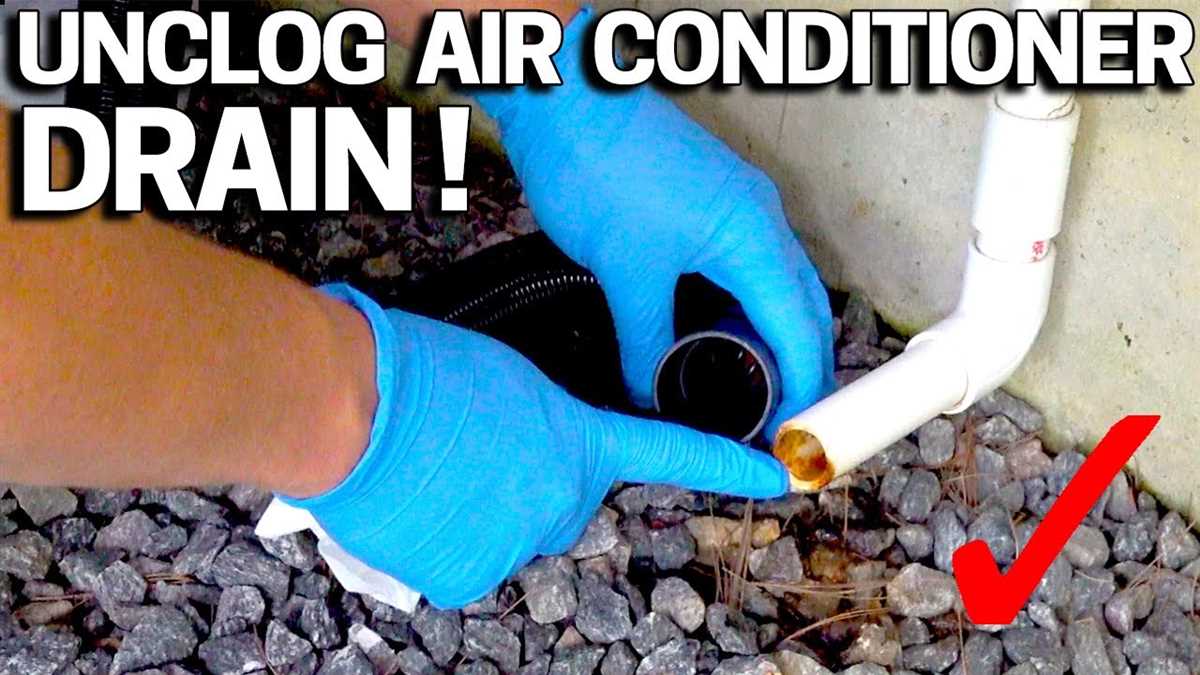
An AC drain line is an important component of an air conditioning system that helps to remove excess moisture from the unit. When an air conditioner is running, it cools the air by removing heat and moisture from it. The moisture that is extracted from the air accumulates in the AC unit and needs to be drained away. This is where the AC drain line comes into play.
The AC drain line is a small pipe or tube that is connected to the air conditioning unit and is responsible for carrying the condensate water away from the unit and out of the building. It is typically located near the outdoor unit of the air conditioner and is designed to direct the water to a suitable drainage system.
Importance of AC Drain Line Maintenance
Maintaining the AC drain line is crucial to ensure that the air conditioner functions properly and efficiently. If the drain line becomes clogged or blocked, the condensate water may not be able to drain away and can build up inside the unit. This can lead to several issues such as reduced cooling performance, increased humidity levels, and potential water damage to the AC unit and surrounding areas.
Regular maintenance of the AC drain line, including cleaning and clearing any obstructions, is necessary to prevent these problems. By keeping the drain line clean and free of debris, you can ensure that the condensate water drains away properly, allowing the air conditioner to operate at its best.
Why is it important to clean your AC Drain Line?
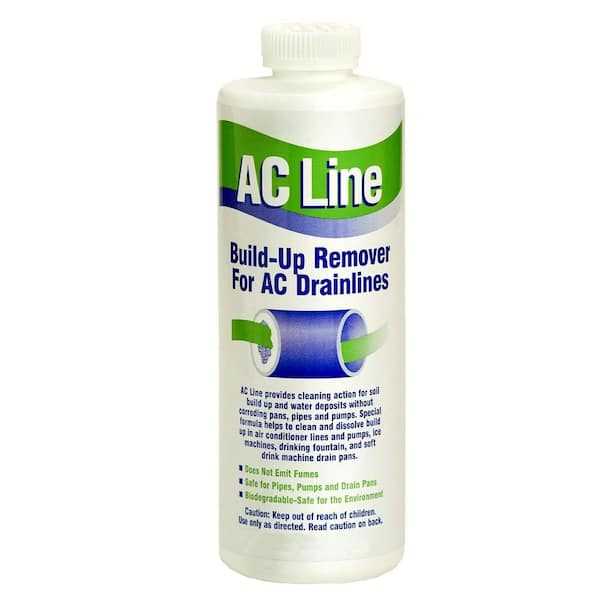
The AC drain line plays a crucial role in the proper functioning of your air conditioning system. Over time, dirt, debris, and algae can accumulate in the drain line, leading to clogs and blockages. This can cause water to back up into the system, resulting in leaks, water damage, and even mold growth. Regularly cleaning the AC drain line is essential to prevent these issues and ensure the efficient operation of your AC system.
Prevents water damage: When the AC drain line is clogged, water can back up and overflow, causing damage to the surrounding areas. This can lead to costly repairs and potentially pose a safety hazard. By cleaning the drain line regularly, you can prevent water damage and maintain the integrity of your home or building.
Improves system performance: A clogged drain line can impede the airflow and reduce the efficiency of your AC system. When the drain line is clean, the system can effectively remove moisture from the air and cool the space more efficiently. This not only improves the comfort level but also helps save energy and reduce utility costs.
Prevents mold and mildew growth: Stagnant water in a clogged drain line creates a favorable environment for mold and mildew growth. These types of fungi can not only affect the air quality but also pose health risks to the occupants. By keeping the drain line clean, you can prevent the growth of mold and mildew and ensure a healthier indoor environment.

Extends the lifespan of your AC system: Regular maintenance, including cleaning the AC drain line, can help extend the lifespan of your air conditioning system. When the drain line is clean and free from obstructions, the system can work efficiently without being strained by water backup or excessive moisture. This reduces the likelihood of mechanical failures and prolongs the lifespan of the AC unit.
In conclusion, cleaning your AC drain line is vital for the proper functioning and longevity of your air conditioning system. By preventing water damage, improving system performance, preventing mold growth, and extending the lifespan of your AC system, regular maintenance can save you from costly repairs and provide a comfortable and healthy indoor environment.
Step 1: Gather the necessary tools
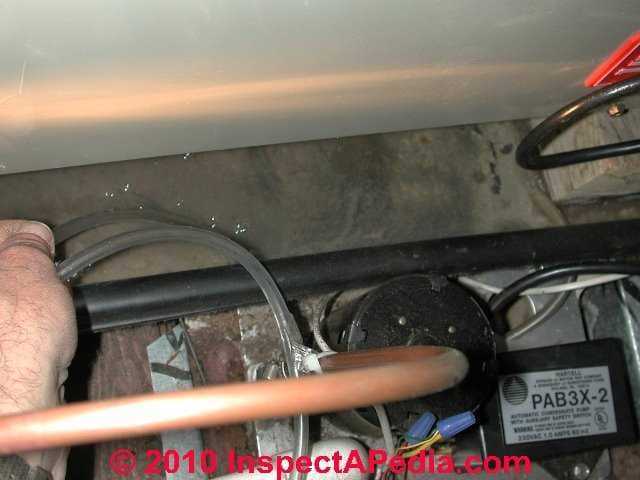
Before you begin cleaning the AC drain line with an air compressor, it is important to gather all the necessary tools. Having the right equipment on hand will make the cleaning process much easier and more efficient.
Here are the tools you will need:
- An air compressor: This will be used to blow air through the drain line and clear any blockages.
- A wet/dry vacuum: This can be used to suck out any debris or water that may be clogging the drain line.
- A screwdriver: This will be needed to remove any access panels or covers on the AC unit.
- A bucket or container: This will be used to catch any water or debris that may come out of the drain line during the cleaning process.
- A cleaning solution: It is recommended to use a mixture of water and vinegar or bleach to clean the drain line and remove any dirt or grime.
- A brush or pipe cleaner: This will be used to scrub the inside of the drain line and remove any stubborn blockages.
By gathering these tools before you begin, you will be well-prepared to clean your AC drain line quickly and effectively.
Step 2: Locate the AC Drain Line
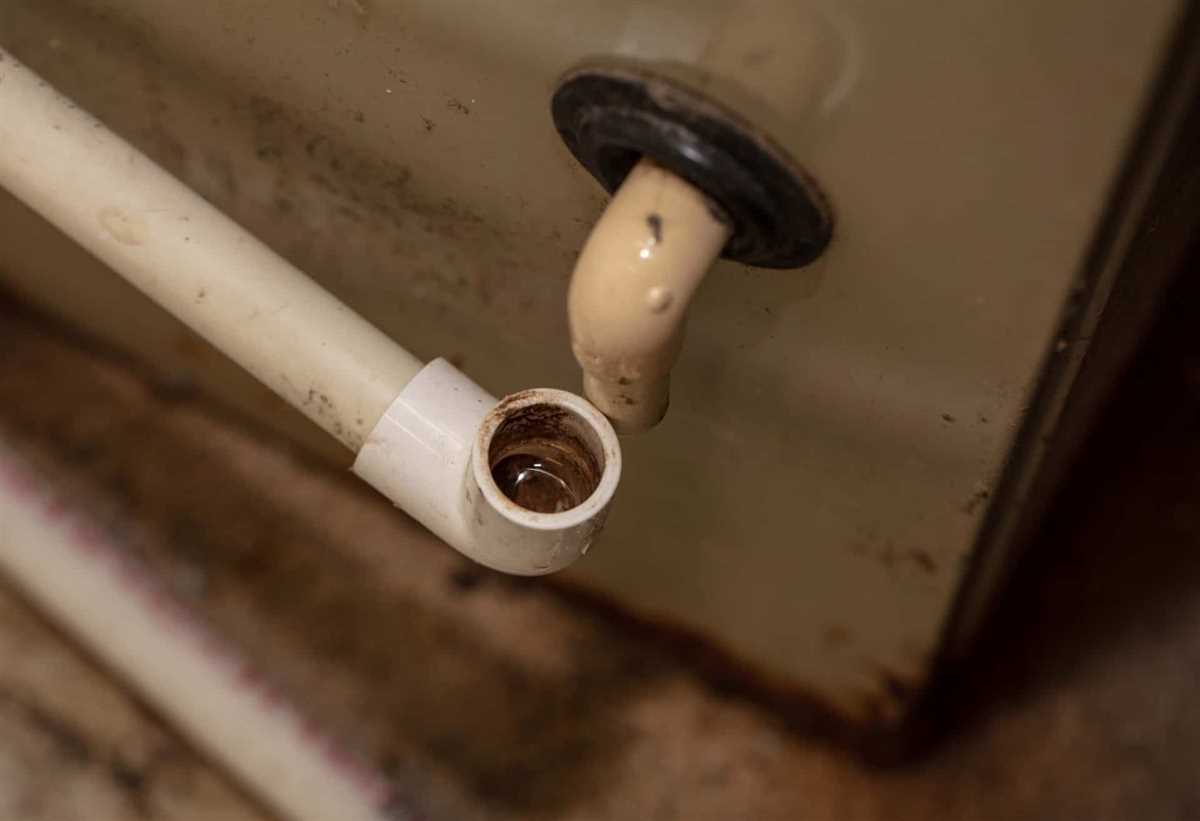
After gathering the necessary tools for cleaning the AC drain line, the next step is to locate the drain line. The drain line is a crucial part of the air conditioning system as it is responsible for removing condensation and excess moisture from the unit.
To locate the AC drain line, start by finding the air handler unit, which is usually located in the attic or basement. The air handler unit is connected to the main air conditioning system and houses various components, including the evaporator coil and the drain line.
Once you have located the air handler unit, look for a small PVC or copper pipe that is attached to it. This pipe is the AC drain line. It will typically be located near the bottom of the unit and may have a cap or a T-shaped fitting on the end.
If you are unable to locate the drain line by visual inspection, you can refer to the manufacturer’s manual or consult with a professional HVAC technician for assistance. They will be able to guide you in finding the drain line and provide further instructions for cleaning it.
Step 3: Prepare the air compressor
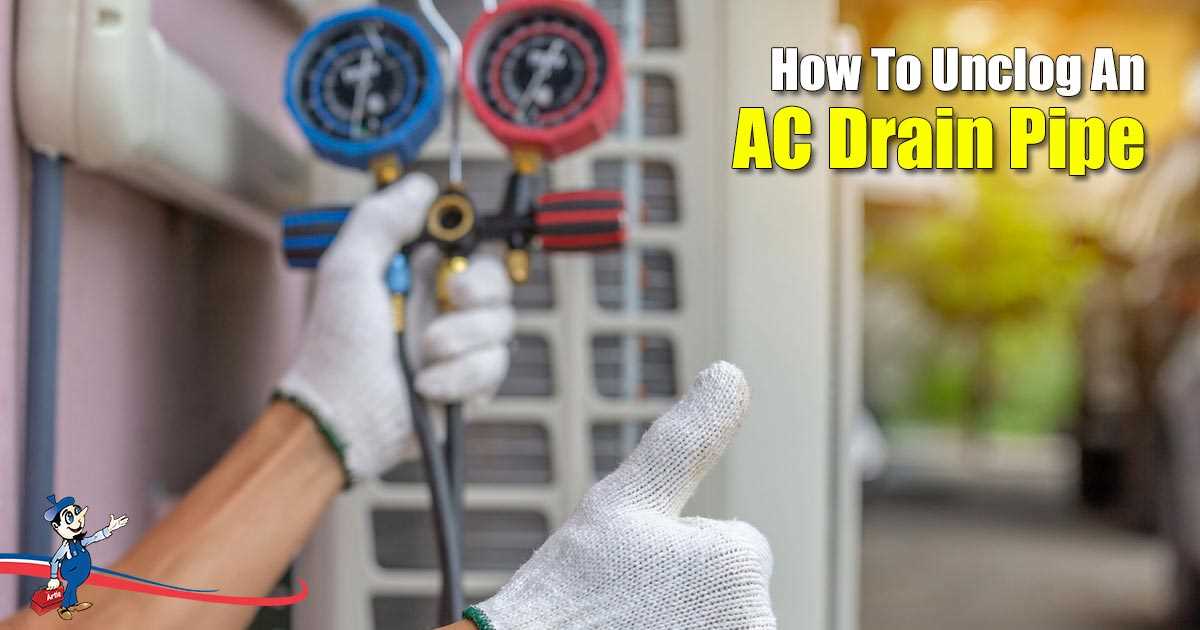
Before you can use the air compressor to clean the AC drain line, you’ll need to make some preparations. Here are the steps to follow:
- Find a suitable location for the air compressor. Make sure it is close to the AC unit and has a stable surface to sit on.
- Check the air compressor for any damages or leaks. It’s important to ensure that it is in good working condition before proceeding.
- Connect the air compressor to a power source and switch it on. Allow it to build up pressure according to the manufacturer’s instructions.
- Inspect the air compressor’s hose for any damage or blockage. A clear and unrestricted hose is essential for efficient cleaning.
- If necessary, attach a nozzle or attachment to the end of the hose. This can help direct the airflow and make it easier to reach the AC drain line.
Once you have completed these steps, you’ll be ready to move on to the next stage of cleaning the AC drain line with the air compressor.
Step 4: Disconnect the AC Drain Line
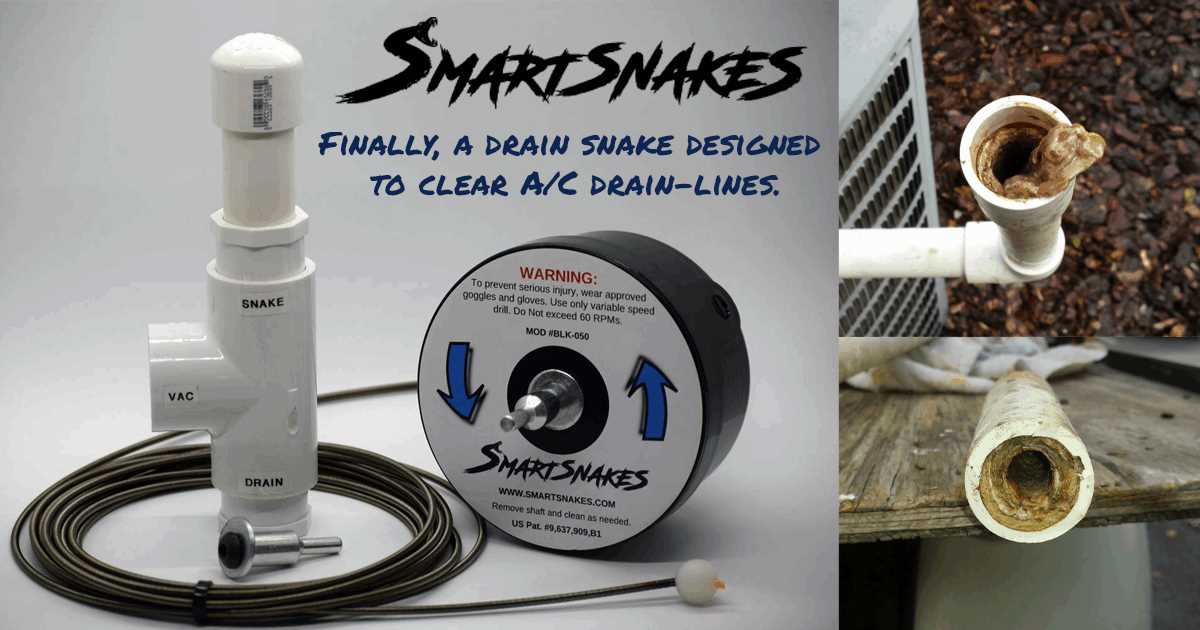
To properly clean the AC drain line, you will first need to disconnect it from the air conditioning unit. This step is crucial to ensure that the cleaning process is thorough and effective.
Before disconnecting the drain line, ensure that the air conditioning unit is turned off and unplugged to avoid any accidents or electrical shocks. Locate the drain line, which is typically a PVC pipe attached to the unit.
Once you have located the drain line, use a wrench or pliers to loosen the clamp or connector that secures the line to the unit. Carefully remove the drain line from the unit, being mindful not to damage it or create any additional leaks.
If the drain line is difficult to remove, you may need to apply some gentle force or use a lubricant to loosen it. Take your time and be cautious throughout the process to avoid causing any damage.
After disconnecting the drain line, inspect it for any signs of clogs, debris, or mold growth. If you notice any blockages, use a pipe cleaner or a small brush to gently remove the obstruction and clean the inside of the drain line.
Once the drain line is clean, reattach it to the air conditioning unit in the same manner that it was originally connected. Ensure that the clamp or connector is securely tightened to prevent any leaks.
Step 5: Clean the AC Drain Line with the air compressor
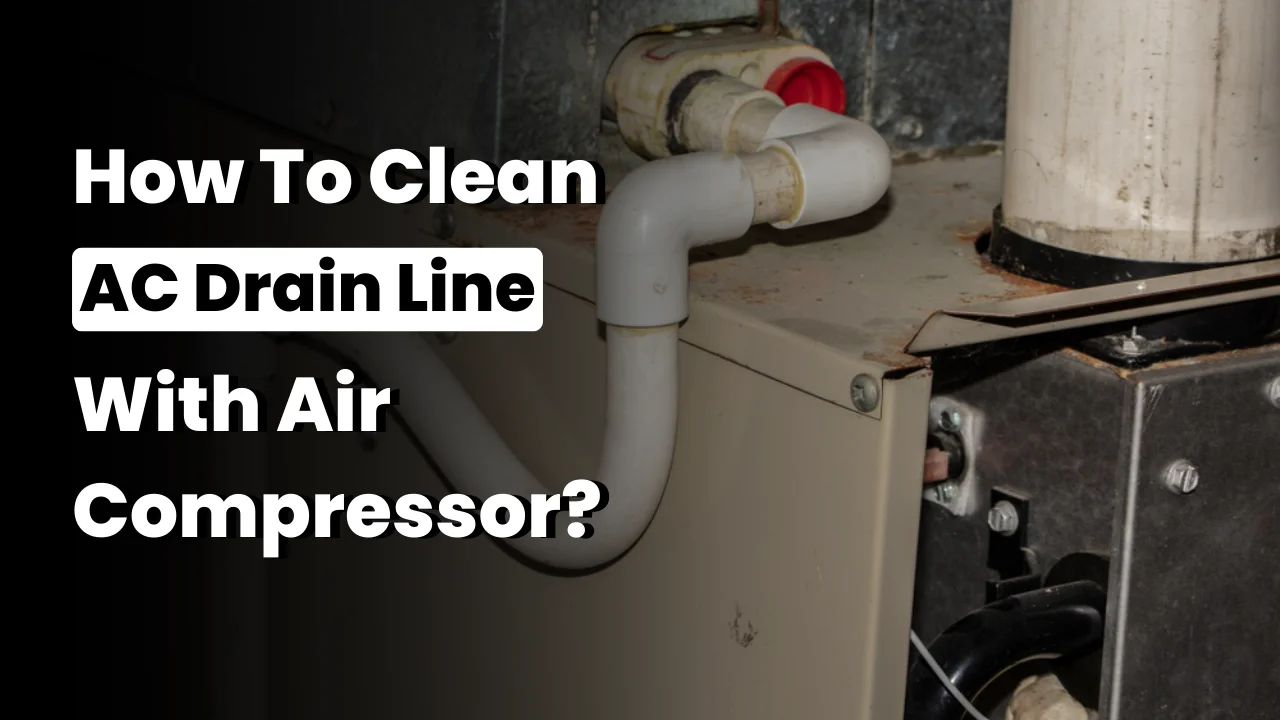
After removing the clog from the AC drain line, the next step is to clean it thoroughly using an air compressor. This will help to ensure that all debris and dirt are completely removed from the drain line, preventing any future clogs or blockages.
To clean the AC drain line with an air compressor, you will need to locate the access point for the drain line. This is typically located near the exterior AC unit or in the basement near the evaporator coil. Once you have located the access point, you can begin the cleaning process.
First, attach the air compressor to the drain line using a fitting or adapter. Make sure the connection is secure to prevent any air leaks. Then, turn on the air compressor and set the pressure to a moderate level. Too much pressure can cause damage to the drain line, so it is important to use caution.
With the air compressor running, insert the nozzle of the air compressor into the access point of the drain line. Gently push the nozzle into the drain line, being careful not to push too far and cause damage. As the air compressor blows air into the drain line, it will push out any remaining debris and dirt.
Continue to move the nozzle along the length of the drain line, gently blowing air into each section. It may be necessary to go back and blow air into certain sections multiple times to ensure thorough cleaning. Once you have cleaned the entire drain line, turn off the air compressor and disconnect it from the drain line.
After cleaning the AC drain line with the air compressor, it is a good idea to flush the drain line with water to remove any loosened debris. You can do this by pouring a mixture of water and bleach or vinegar into the access point of the drain line. This will help to sanitize the drain line and prevent the growth of mold and bacteria.
By following these easy steps to clean the AC drain line with an air compressor, you can ensure that your AC system operates efficiently and effectively. Regular maintenance and cleaning of the drain line will help to prevent clogs and blockages, allowing your AC system to cool your home properly.
Step 6: Reconnect the AC Drain Line
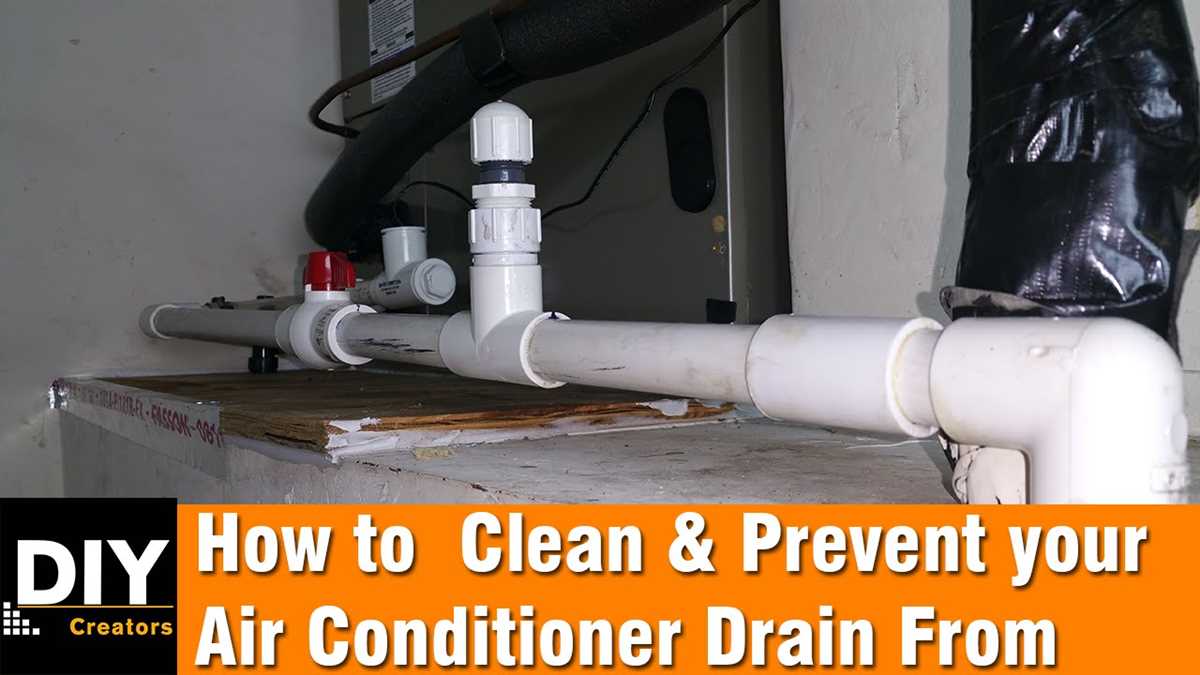
After you have finished cleaning the AC drain line with an air compressor, it is important to reconnect the drain line properly to ensure that it functions correctly.
First, locate the end of the drain line and ensure that it is clean and free from any obstructions. If there is any debris or buildup, use a cloth or brush to clean it off.
Next, align the end of the drain line with the opening on the AC unit. Make sure that it is securely in place and there are no gaps or leaks. Use a clamp or other fastening method to hold the drain line in place if necessary.
Once the drain line is securely connected, you can test the system by turning on the AC unit and checking for any leaks or drainage issues. Make sure that water is properly flowing through the drain line and draining away from the unit.
If you notice any problems or issues with the drain line after reconnecting it, you may need to repeat the cleaning process or seek professional assistance. It is important to keep the AC drain line clean to prevent clogs and water damage to your AC system.
FAQ:
How often should I clean my AC drain line with an air compressor?
It is recommended to clean your AC drain line at least once a year to prevent clogs and keep your air conditioner running efficiently.
Can I clean my AC drain line without an air compressor?
Yes, you can clean your AC drain line without an air compressor. You can use a wet/dry vacuum or a pipe cleaner to remove any clogs or debris.
What type of air compressor should I use to clean my AC drain line?
You can use a small portable air compressor with a maximum pressure of 100 PSI to clean your AC drain line. Make sure to use a nozzle attachment that can fit into the drain line.
Can I use compressed air from a can to clean my AC drain line?
Using compressed air from a can is not recommended for cleaning AC drain lines. The pressure from a can may not be sufficient to clear clogs, and it can also cause damage to the drain line.
What safety precautions should I take before cleaning my AC drain line with an air compressor?
Before cleaning your AC drain line with an air compressor, make sure to turn off the power to your air conditioner. Wear protective gear such as gloves and safety goggles to prevent injury. Also, be cautious of the pressure and avoid using too much force that could damage the drain line.
How do I know if my AC drain line is clogged?
If your AC drain line is clogged, you may experience water leakage from the air conditioner or notice a musty smell coming from the unit. You can also visually inspect the drain line for any signs of blockage or debris.
What should I do if the AC drain line is still clogged after cleaning it with an air compressor?
If the AC drain line is still clogged after cleaning it with an air compressor, you may need to call a professional HVAC technician. They can use specialized tools and techniques to clear the clog and ensure that your air conditioner is functioning properly.
Video:










